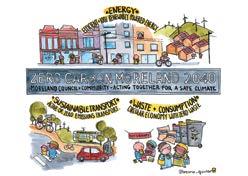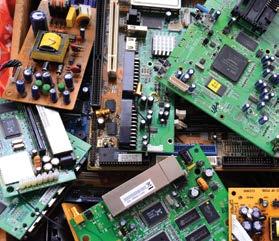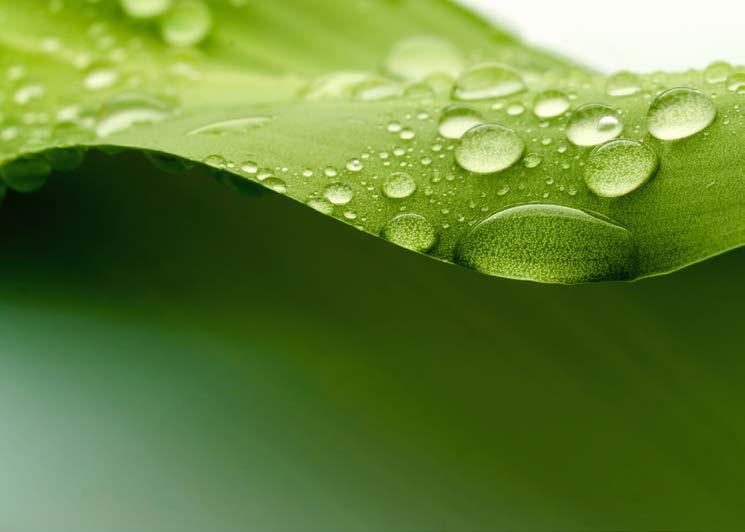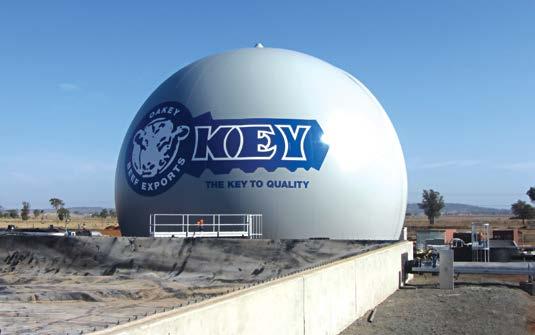
17 minute read
Industry News
Researchers are conducting a series of experiments using X-ray scattering and computer modelling in order to find a low-global warming replacement propellant for asthma inhalers.
By 2030, the propellant tetrafluoroethane (HFC-134a) will be banned from use in pressurised metered-dose inhalers (pMDIs), leaving the world’s 339 million asthma sufferers (2.7 million Australians) without a solution and short of breath – literally.
Advertisement
In 2019, the Kigali amendment to the Montreal Protocol mandated the beginning of a 10-year phase-out of HFC-134a – a potent greenhouse gas. Just 1kg of HFC-134a is equivalent to 1,430 kg of carbon emissions.
Unfortunately, this chemical is also essential to the operation of asthma inhalers. The pharmaceutical industry is now in a race to transition to more environmentally-friendly solutions.
The problem is that most potential replacements are highly flammable and unsuitable for human consumption. Dry powder inhalers are not yet suitable for all drugs, leaving many respiratory disease sufferers without an option.
But a ground-breaking international research investigation, led by Monash University, is looking to #CHANGEIT.
Dr Daniel Duke, a Senior Lecturer in Monash University’s Department of Mechanical & Aerospace Engineering, is working with colleagues at the Woolcock Institute of Medical Research (Sydney) and Argonne National Laboratory (Illinois, USA), as well as a major drug company, to reduce the carbon footprint of inhalers using stateof-the-art synchrotron X-ray technology and advanced computer models.
This technology allows researchers to see what happens to the spray particles inside the inhaler, and measure the density and quantity of the drug that various propellants can deliver asthma sufferers in order to identify the most promising replacements. The
Clear air: Monash research to reduce carbon footprint of asthma inhalers
research is being led out of the Laboratory for Turbulence Research in Aerospace and Combustion at Monash University in Melbourne.
Dr Duke has received an Australian Research Council Discovery Project grant of $185,000 to continue his fundamental work in helping asthma sufferers in the future.
“What we’re trying to do is find out whether there are alternative propellants, which behave properly, from the options that are safe. HFC-134a was previously found in our air conditioners and fridges before it was banned due to its high emission of greenhouse gases,” Dr Duke said.
“Pharmaceutical companies have stuck with HFC-134a because it works very well; and, most importantly, it’s safe for human consumption. One problem is all the environmentally-friendly options that have gone into your air conditioner and fridge are flammable or toxic, and we don’t know if they’re safe for the human body if ingested.
“Another issue is some chemicals have lower pressures and lesser densities which means they carry less of the drug into the airway. That means we’ll also need to look at redesigning pMDIs to maximise performance.
“Essentially we’re doing all the groundwork to give the drug companies the confidence to go to clinical trials knowing that all the engineering, chemistry and physics problems have been put to bed, and all they have to do is make sure that it’s effective and safe for patients.”
Asthma affects as many as 339 million people worldwide and around 2.7 million Australians. In 2015, the estimated cost of asthma in Australia was $28 billion. Roughly 40,000 Australians are hospitalised with asthma each year.
The research team comprises Dr Daniel Duke and Professor Damon Honnery (Monash University); Brandon Sforzo and Alan Kastengren (Argonne National Laboratory); Professor Paul Young (University of Sydney) and Professor David Schmidt (University of Massachusetts-Amherst).
Moreland acts on vision for a zero carbon and waste free community by 2040

Moreland City Council in inner-suburban Melbourne, recently adopted its Zero Carbon Moreland - Climate Emergency Action Plan. The plan sets out how it will be supporting residents, businesses and schools to act together in response to the climate emergency.
The five-year action plan maps a pathway towards three key outcomes for 2040, namely: • efficient and 100% renewably powered energy; • active or zero emissions transport; and • a circular economy with zero waste. Mayor of Moreland, Cr Lambros Tapinos highlighted the urgent need for Council and the Moreland community to think global, act local.
“Council is leading by example in our own operations. Through a combination of energy efficiency and renewable energy, we expect Council’s greenhouse gas emissions will soon be around 70% less than 2011 levels,” Cr Tapinos said. “We know that climate change is a global challenge. Communities like Moreland can lead the way by taking local action together for a safe climate.”
Over the next five years Council will support residents, businesses and organisations to rapidly reduce their climate pollution through initiatives like kerbside collection of food and garden organics waste.
Other initiatives include the construction of five kilometres of new shared paths to make cycling and walking more accessible, supporting local recycling and reuse-focused initiatives (like toy libraries and repair cafes) and installing more electric vehicle charging stations for public use.
Council’s Cooling Communities initiative will continue to ensure low-income households can access support to upgrade their homes to stay protected from extreme weather.
The action plan includes targets to double the amount of solar power capacity installed across the municipality and reduce average residential energy use by around 16% by 2025.
Moreland Council will continue acting to reduce its own emissions, by transitioning its car fleet to zero emissions vehicles and shifting away from fossil gas use in its facilities.
For further information, please visit: www.morelandzerocarbon.org.au/actions
UNISA expert calls for ‘fire-line’ to futureproof homes against bushfire disaster

With damages costs in the billions, the recent bushfires across Australia saw more than 12.6 million hectares burnt, thousands of homes and buildings destroyed, and most tragically, resulted in the deaths of 34 people.
Such immense devastation means policymakers are under pressure to identify strategies that will future-proof communities as they start rebuilding beyond the 2020 bushfires.
UniSA sustainability expert, Dr Sukhbir Sandhu says Australia should consider the establishment of a ‘fire-line’ – a bushfire demarcation line to identify high-risk areas not recommended human habitation.
In the same vein as Goyder’s Line of rainfall (created in South Australia 1865 to map areas liable to drought and therefore unsuitable for planting crops), Dr Sandhu says a fire-line would help people clearly recognise areas that are suitable, or not suitable, for living.

“The frequency and intensity of bushfires in Australia have changed dramatically over the past decade – our fire season is longer, the fires are more brutal, and the fallout is extensive,” Dr Sandhu says.
“Accordingly, Australia’s responses to the fires must change too.
“As people look to rebuild their homes, schools and communities, we need to be asking the question – is it really safe to do so in these areas?
“The current bushfires have destroyed the livelihoods of far too many people to be remedied by standard recovery and rebuilding strategies. And, as fires continue to burn into residential areas, governments must consider something more ground-breaking in recovery.
“It’s time for policymakers to take a strong stand where it is safe for communities to rebuild, and a fire demarcation line could help achieve this.”
Dr Sandhu says that policymakers have the basic tools to start such an initiative which, in conjunction with CFS aerial footage, satellite imagery, and well-developed insurance company models (that not only identify areas susceptible to bushfires, but coastal flooding as a result of rising sea levels) would provide clear information for a new fire-line.
She says that areas adjacent to fire-lines should also be built to compulsory bushfireresilient construction guidelines.
“We have the technology to create homes with bushfire resistant materials, and to enable houses with certain structural properties to serve as fire bunkers. But to date, there are no clear policies that support or promote these technologies for use in vulnerable areas,” Dr Sandhu says.
“This is not about quick fixes; we need long-term, sustainable strategies to address the undeniable effects of climate change.”
Start of WA’s Containers for Change program deferred due to COVID-19
The Western Australian Government has deferred the launch of State’s container deposit scheme Containers for Change.
Originally planned for launch on June 2, 2020, the decision to delay the scheme is due to the unprecedented impact of COVID-19 and its expected disruption to refund points. The scheme’s postponement is in accordance with advice from the scheme co-ordinator, WA Return Recycle Renew Ltd (WARRRL).
The State Government has also responded to calls from community, local government and businesses for the scheme launch to be postponed. The Government will review the situation in August 2020 to determine whether the scheme’s new start date will be November 2020 or June 2021.
Delaying the scheme until after the major impacts of COVID-19 are felt will eliminate the public health concerns such as potential risk of infection from handling containers, as well as over-the-counter refund points contravening social distancing.
A delayed launch would also avoid starting the scheme during a period which may be the potential peak of the pandemic.
The scheme focuses on employing people with disability, older people and Aboriginal people. These community groups are generally more vulnerable and their involvement in the scheme may place them at greater risk of infection.
Closures of pubs, clubs and many other venues, as well as schools, would have also impacted on the volume of containers.
WA Return Recycle Renew Limited, the Department of Water and Environmental Regulation (DWER) and the State Government will continue to work closely on developing a revised timeline for the launch of the scheme.
Speaking about the delay, Western Australian Environment Minister Stephen Dawson, commented: “COVID-19 has resulted in significant global, national and State impacts and there has been disruption across the board for Government initiatives and services.”

“The McGowan Government, in close consultation with WARRRL and DWER, determined that under the COVID-19 environment we are all faced with, there are too many potential health risks and logistical difficulties to start the scheme on June 2, 2020.”
“The Government has also responded to calls from community, local government and businesses for the scheme launch to be postponed,” the Minister added. “Starting the scheme on June 2 would put the scheme’s success at risk and place refund point operators under significant pressure.”
“While it is disappointing to be deferring the scheme, we remain committed to delivering the most diverse and accessible scheme in Australia.”
“We will continue to work together and update the community, operators and suppliers throughout this period of uncertainty,” Minister Dawson concluded.
Recycling of critical minerals is not the only solution, says GlobalData
A recent report from the UK Office of Science and Technology states that while the UK is dependent on imported critical minerals for a number of sectors, there is no specific strategy for their supply - a worrying thought considering the implications of recent trade wars.
Critical minerals are used to create products of strategic importance for many UK sectors, but the UK has no specific critical minerals strategy and no single department has responsibility for policy regarding these important materials.
According to the UK Office of Science and Technology, the variety of materials used in products is increasing, with microchips containing around 60 metals rather than the 20 they needed in the 1990s. This has caused the rate of metal usage to rise in recent years, with more than 80% of the total global production of rare earth elements, indium, gallium and platinum group metals occurring since 1980.
GlobalData’s mining technology writer Umar Ali says: “Recycling is a solution but it’s not the only solution. Recovering critical minerals from recycled materials reduces the need for extraction and the energy demands associated with mining - for example, recovering cobalt from scrap only requires 7–14% of the energy needed to extract it from ore.”
“However, recovering materials from waste electrical and electronic equipment is challenging due to the low concentrations of these critical minerals in said equipment, the report states that recovering one tonne of indium would require 3.85 million LCD TVs," Umar Ali says.
“Recovered materials are also often of lower quality than mined materials, which limits the effectiveness of recycling as an alternative to mines or imports. For some critical minerals, such as germanium and gallium, there is no technology available to recover them."

The report suggests a “...circular economy” approach to recycling, recovering resources at their highest quality to keep them in circulation for longer, as a way of solving the problems with recycling.
This approach includes practices that consider product disposal by avoiding complex metal mixtures, as well as developing methods to effectively separate critical minerals and introducing schemes to make manufacturers responsible for the entire product life-cycle.”
Dedicated fund to restore SA wildlife habitats launched

The South Australian Government has joined forces with Nature Foundation SA to launch a special fund to re-establish habitat for wildlife in the state’s bushfire-ravaged regions.
The Wildlife Recovery Fund is a collaborative project between the National Parks and Wildlife Service SA and the not-for-profit Nature Foundation to assist with the recovery and restoration of flora and fauna in fire-damaged regions across South Australia.
South Australian Minister for Environment and Water David Speirs said there have been significant impacts to wildlife and habitat across several parts of South Australia, particularly around Cudlee Creek and on Kangaroo Island.
“While many community groups have mobilised to care for injured wildlife, the Wildlife Recovery Fund will be used to re-establish habitat, particularly for the most endangered and vulnerable species,” said Minister Speirs.
“While it’s going to take time to establish a full picture of the damage, we believe a significant number of Kangaroo Island’s koalas have perished, and considerable areas of Glossy Black Cockatoo habitat, including nests, have been destroyed.
“We are also very concerned for the future of the Kangaroo Island Dunnart – one of the species thought to be most at risk, due to habitat loss. The immediate challenge will be to ensure that surviving animals have sufficient habitat in which to find food and avoid predation.
“Our National Parks and Wildlife Service will work collaboratively with the Nature Foundation to ensure we use sound planning, good science and local advice to ensure funds are spent wisely.
“The community response to the bushfires has been incredible and I encourage those who can, to give generously.
Nature Foundation Chair Jan Ferguson OAM said the state has experienced catastrophic loss and there is a need to work together on recovery.
“We need to harness good science and advice to ensure funds raised are put to use in the most important places and achieve the best possible outcomes for threatened and vulnerable plants and animals,” said Ms Ferguson.
“Donations will go to local landholders and community groups in fireaffected regions to urgently assist natural regeneration through weed and feral animal control, and fencing. This will give both threatened animal and plant life the best chance of recovery.
“Nature Foundation is proud to be continuing a 40-year tradition by partnering with South Australian farmers, communities and the National Parks and Wildlife Service SA on this new Wildlife Recovery Fund.”
To donate visit: www.naturefoundation.org.au/support-us/wildliferecovery-fund
Mobile Media Blasting - Wet & Dry • Specialising in Concrete preparation for
Carbon Fibre application • Abrasive & Non Abrasive Blasting • Paint, rust & contaminant removal from many substrates • Line marking removal • Compact machinery for easy access • Low media usage which means less environmental issues with containment and dust • Suitable for confined space blasting Recent Carbon Fibre preparation projects - • The Glen Shopping Centre Mt Waverley • 161 Collins Street Melbourne


1300 240 337 www.enviroblast.net.au

SEWERAGE BYPASS
6" TRASH PUMP ... DIRTY WATER SPECIALIST ü Self priming to 7m ... fast, easy set up ü Flows to 4,200 lpm ü 28HP Kubota diesel engine ü Skid or trailer mount options Australian Pump Industries Aussie Pumps 02 8865 3500 www.aussiepumps.com.au



New tool for sugarcane farmers to help the Great Barrier Reef

CSIRO's 1622WQ app monitors nitrogen runoff from fertilisers on farms. Image courtesy CSIRO
In a world first, sugarcane farmers in far north Queensland have a new app, developed by Australia’s national science agency, CSIRO, that will help them manage fertiliser use and reduce nitrogen runoff onto the Great Barrier Reef.
Currently there’s no way sugarcane growers can tell whether fertiliser has runoff from their farm but the free app, named 1622WQ, shows the concentration of nitrogen in local waterways in real time. It means that, for the first time, they will have easy access to water quality information and can relate their management practices to water quality in local waterways, for example immediately after it's rained.
When rainfall washes nitrogen fertiliser into waterways, it both wastes farmers’ money and becomes a major threat to the health of Great Barrier Reef ecosystems. CSIRO agricultural scientist and 1622WQ project leader Dr Peter Thorburn said the new app was co-designed with farmers to meet their needs.
“Sugarcane growers told us they wanted quick and easy access to water quality information, so they could find out what’s going on with their crops and make better decisions,” Dr Thorburn said.
“Although an app can appear simple, the smarts behind it are anything but. The chain of information between the water quality sensors in local waterways and what you see on your phone is complex and requires substantial innovation along the way.”
The app shows data on nitrate concentrations from high frequency automatic sensors deployed in selected coastal catchments.
It uses CSIRO’s advanced data analytics and state-of-the-art deep learning not available in other data delivery systems. It also shows rainfall so farmers easily see how the weather is affecting local water quality.
Stephen Calcagno is a sugarcane grower and Chairman in the Cairns Region of the peak body, CANEGROWERS. He’s started using the app.
“This will be a great tool for farmers to see the impact of their farm management and help them improve their practises and the environment,” Mr Calcagno said. “I look forward to seeing what happens over the coming wet season.”
CSIRO Chief Scientist Dr Cathy Foley said the app brought together decades of agricultural expertise and close industry relationships with advanced digital technologies.
“We’ve paired our deep domain expertise in agriculture with digital technology to provide a solution for farmers who want to remain efficient and competitive while also reducing their impact on the environment,” Dr Foley said.
“Solving complex challenges like protecting the Great Barrier Reef require deep innovation, but it’s also important that the end result is a simple and intuitive product like this app, that farmers can seamlessly integrate into their business.”
New ways to predict water quality in the days or weeks ahead based on artificial intelligence, something that’s never been done before, are in the pipeline. CSIRO is also building other aspects of importance to sugarcane growers into a suite of 1622 apps, such as fine-tuning which parts of a crop might need more or less fertiliser, and comparing different fertiliser application rates on crop performance and environmental impact before they even plant.
The name 1622 comes from the height of Queensland’s tallest mountain, which is in the area where the initial app development work took place. WQ is for water quality.
CHANGING THE FACE OF WASTE MANAGEMENT
Whatever your waste management needs, GCM Enviro can provide you with the equipment and expertise that you need. From landfill compactors, shedders and compost windrow turners, through to state-of-the-art crushing and screening equipment, GCM Enviro has it all. Top quality equipment from world-renowned manufacturers.
Landfill Compactor • The most productive compactor on the market • A minimum of 10% better compaction than any other compactor • Extends the landfill’s life expectancy by several years • Increases revenue with better airspace management



Shark Shredder • The most versatile waste shredder on the market • Applicable even for the most challenging materials • Produce anything from 50 to 500mm particle size • Mobile diesel and stationary electric models available










